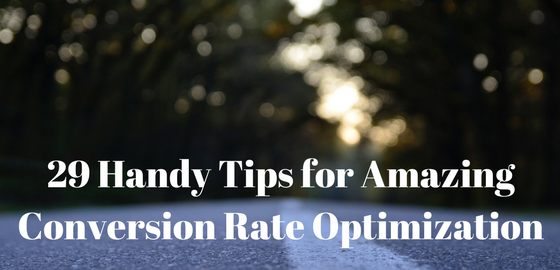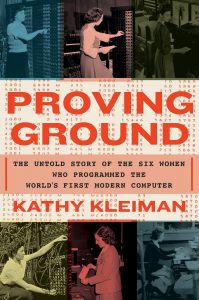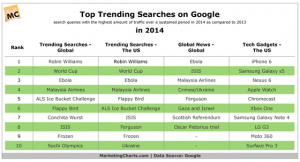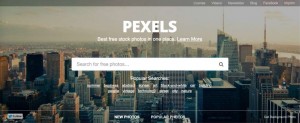— September 8, 2017
Most entrepreneurs and marketers are continuously striving to increase sales. However, there are so many factors to take into account that can make sales drop or grow. Conversion rate optimization (CRO) focuses on most, if not all, of these factors, making it a broad challenge for some entrepreneurs and marketers.
This blog starts with an explanation of CRO and nine CRO tips for beginners who have no resources. After that, you can find twenty advanced CRO tactics that you can use; for some of these, you do need resources.
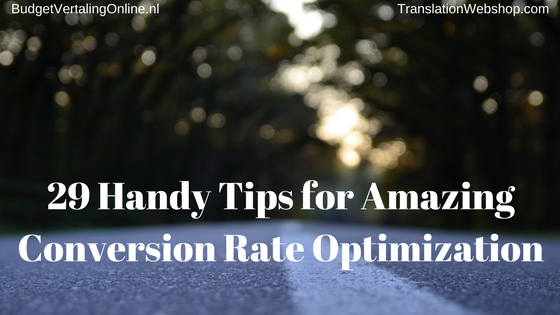
What is CRO?
First, CRO will be explained by Daniel Burstein, who says that CRO is the practice of improving the conversion rate in any advertising, marketing, sales or other business practice that has a goal of getting a person to take an action. The conversion rate measures the number of prospects who take an action that you are requesting.
Web design, copywriting and analytics interpretation are key skills that go hand-in-hand with CRO because many CRO changes are either to design or copy. Also, the ability to understand analytics will (1) give ideas on where in the conversion process you should make CRO changes to have the biggest impact, and once you have made the changes, (2) how impactful they have been to your conversion goals.
CRO can be extremely valuable. Here is an example: you spend significant money on an ad or online display advertising to get people to visit a landing page. If CRO principles can be used to improve the conversion on that landing page, not only does it generate more conversions, it improves the ROI of all your upstream investments made to drive traffic to the landing page.
This does not mean that conversion rate optimization can only be applied to existing campaigns and websites. In fact, marketing and advertising campaigns and websites can be more effective if built from the ground up with a CRO mindset.
9 CRO tips for beginners without resources
What do you do if you do not have enough traffic or resources to run valid tests? In the absence of testable traffic and the necessary resources, Aaron Orendorff thinks qualitative research and these nine principles will set you on the right path. He does want you to know that these principles are among thousands you should consider and are merely examples of low-hanging CRO fruit.
1. Speed
People are in a hurry and are not likely to hang around if your website underperforms. Here is how your website can load quickly:
- Check the speed of your website with a free tool like Pingdom.
- Use a caching plugin for WordPress websites or install one at the hosting level, such as W3 Total Cache.
- Reduce image file sizes with a plugin like WP Smush for your existing images or use Optimizilla before you upload them.
- If your site receives a high volume of globally distributed traffic, third-party solutions can be a tremendous help. For AWS users, a network optimization tool such as Datapath.io on average improves latency by 60%, thereby decreasing Round Trip Time from 3.7 seconds to 1.6.
- Likewise, for non-AWS users, start using a CDN (Content Delivery Network) and host your static files in the cloud that uses a CDN.
2. Singularity
Many landing pages contain multiple offers, but they should not do that. Less is more. Fewer distractions, options, and roads out equal more conversions. My recent blog called How to Beat the Dramatic State of Landing Page Optimization already stressed this. Here is how you can be singular:
- Before you do anything, identify exactly what your one goal of the page or email will be.
- Do not give your readers any other actionable options other than that one goal.
- Be careful using social buttons. Test to see whether conversions increase or decrease with varied numbers.
- While you can certainly have multiple CTAs (call-to-actions) in the sense of having multiple buttons, each and every CTA should direct visitors toward your one, central goal — the next step in your funnel — and be built around the keywords that got them to your page or email list to begin with.
3. Simplicity
Simplicity flows out of singularity: do not add clutter to your pages or emails. Every element on a page needs to support that one goal and pass the ruthless test: does this get my visitor closer to action? Here is how you can be simple:
- Know your one goal and ruthlessly cut anything that distracts from it.
- Be especially ruthless with products and product images: prioritize relevant visuals over stuff that is just “pretty.”
- Make purchase decisions easy on your audience by giving them pre-set options rather than something fully customizable.
- Add plenty of whitespace to every design.
4. Clarity
Clarity means never assuming your audience knows anything. This is vital because until someone truly understands, you do not stand any chance of converting them. Here is how you can be clear:
- Meet your audience’s expectations by creating a strong “scent” between the keywords in your ad, email, or original CTA and the page they are directed to.
- Do not get too clever: call products what they are.
- Avoid technical language and jargon as much as possible.
- Lead with the benefits and then unpack the features or offer “To Learn More” links, pop ups, or page expansions.
5. Identification
If you know who your target audience is, you know how to address them. If you know how they think, you understand how to write and prioritize your copy. And if you understand how their life will become better because of what you offer, you know how to enter the conversation already taking place in their mind. Here is how you can know your audience:
- Every page or email must have a single target market.
- Get to know that single target market by spending time on the sites and social platforms they already frequent. Pay special attention to their comments.
- Dig deeper by pulling out word-for-word scripts from review sites like Amazon, Yelp, Angie’s List, and TrustRadius.
- Conduct your own voice of customer research through surveys and questionnaires either on your site or via email.
6. Attention
Every page has roughly eight seconds to grab attention. If you fail, your target audience will be whisked away by a simple click. A good conversion experience is one in which your visitors are compelled to pay attention and ultimately interact with your conversion goal – clicking the CTA. Here is how you can grab attention:
- Answer the two fundamental questions from your user’s perspective: “What hell will this page save me from?” and “What heaven will it deliver me unto?”
- Use keywords in your headline and subheads.
- Ensure your subheads connect, qualify, intensify or push.
- Always write directly to your audience by using the word “you.”
7. Desire
Desire — not your actual products or offers — is what makes people buy. Your task is not to create mass desire but to channel and direct it. To optimize conversions, two types of desire stand out: individual (what is in it for me?) and social (what are the people I like doing?). Here is how you can create desire:
- Leverage individual desires by answering the question “What is in it for me?”
- Lean on social desire — i.e. likability and social proof — by featuring testimonials that are either story-driven or backed by data.
- Use hero images that vividly enflesh the desire your product or service aims at.
- Add logos of prominent customers to create the social desire to be associated with successful brands.
8. Fear
Fear is the dark side of attention and the most primal and powerful human motivator. It does all sorts of wild and deeply physiological things to both our brains and our bodies. Using fear for CRO goes right back to the second of the two questions from attention: What hell will this page save me from? What will happen if your reader does not take the action you want them to take? You want to put the thought in your reader’s mind that if one does not take action right now, one is going to lose out big time. Here is how you can scare people:
- Structure your page or email around the PAS formula: problem, agitation, solution.
- Write the copy for your “painful” button — the opt out — using negative consequences.
- Add scarcity and urgency using countdowns for availability and time.
- Beware of manufacturing and over using scarcity and urgency. Always be honest; otherwise, you risk coming off as dishonest.
9. Trust
Trust is a big deal online and visitors will determine the trustworthiness of your site in less than a blink of an eye. In short, great design gets people to trust you and to stick around. Poor design creates mistrust and makes people leave. Here is how you can optimize for trust:
- Prioritize and invest in professional design: clean, uncluttered, and beautiful.
- Make your contact information constantly visible and available.
- Use other people in the form of testimonials and logos to establish social proof.
- Truly be trustworthy.
20 CRO tactics for entrepreneurs and marketers with and without resources
The following twenty CRO tactics come from R.L. Adams, who says that to begin, all you need is a converting offer and a sales funnel. Once you have those two, everybody with and without resources can use these tactics:
1. Identify the problem
The first step in optimizing anything online is to ensure you have identified the problem. This should usually be done before you build your product or service but even if you have a product or service and a sales funnel, the better you identify the problem, the more likely you will be able to improve your offer and sales in the long term.
2. Understand your demographic
You should know the ideal customer who is experiencing the pain you are attempting to solve. This involves knowing their gender, age, their income bracket, their occupation, their marital status, their geographical location, and so on so that you can target them accordingly in your ads.
3. Create a powerful lead magnet
If you want to reach the right consumer, and you want that consumer to willingly give you their details so that you can attempt to peddle your offers to them, you need a great lead magnet. What that lead magnet is entirely depends on a number of factors, such as PDF checklists, free eBooks, trial memberships.
4. Use clear headlines that sizzle
The headline is crucial for optimizing your conversion rates. It really boils down to how well you are addressing the consumer’s problem, then opening the door for the solution further on in the copy.
5. Fine-tune your sales copy
Your sales copy is excruciatingly important as it defines your potential for success. If your copy fails to convey the problem and offer a solution in the best manner possible, people will click off and go elsewhere.
6. Increase organic traffic with SEO
One simple way to optimize your conversion rates is to increase the flow of free traffic. By learning SEO, you can discover ways that you can drive unlimited free traffic to virtually any offer at any time. This allows you to test things out without losing your shirt.
7. Incorporate the word “free”
The word “free” is a primary motivation for consumers. Studies have shown that consumers are far more likely to grab something that’s free versus something that’s priced even at one cent.
8. Leverage testimonials
Testimonials should be located throughout your sales funnel. It is important to have them displayed very prominently on your product page. The more authentic and genuine these are, the more likely people will be to buy. Video testimonials are even better.
9. Build a warming email sequence
Email warming sequences are very important if you are serious about conversion rates. When people get to know you and you offer a bit of transparency into your life (reveal the path that you have taken and the struggles that you have endured), people relate with that. It builds a solid bond between yourself and the consumer.
10. Use authentic images and videos
Use your own photos and videos and make them as authentic as possible. You need to get out there and start gathering some great imagery, which is better than stock photos.
11. Remove objections
This is a big one. The primary thing that holds people back from hitting the buy now button are objections. You have to remove those objections. The better you can do that, the more likely you will be able to convert that browser into a buyer.
12. Leverage the principle of scarcity
Scarcity is a big driver of consumer behavior. How well you implement scarcity in your offer will largely dictate your success. Words like “limited time offer” or “expires tomorrow” and so on should be central in scarcity marketing.
13. Implement a solid guarantee
One major objection that people often have is price. But when you provide a rock-solid guarantee, you essentially remove that objection. This is a big one. People want to know that there is no risk in their purchase and that if the product or service falls short for them, that they can return it with no questions asked.
14. Add value to the exchange
How does your product or service add value? How well are you conveying that? Are there ways you can add even more value to the exchange? Find ways you can add an immense amount of value and watch your conversion rates skyrocket. You can start a blog to achieve this or use some other method.
15. Create urgency
Sometimes, you need consumers to act now. Scarcity will not always cut it, especially in the digital world. You need to add urgency. One tool for adding urgency is Deadline Funnel, which presents a countdown timer that can automatically go to an expired offer page when it is done.
16. Add exclusivity to your offer
Are there ways to make your offer even more exclusive? This is a great way to improve sales but you have to ensure you are appealing to the right crowd with the right exclusivity that fits them. First, you need to understand your demographic. Then, you have to add exclusivity the right way and not isolate other potential consumers.
17. Use a video sales letter (VSL)
This is a great way to show the world who you are. Be transparent. Talk to the consumer. Tell them about whatever it is that you are selling. VSLs often lead to higher conversion rates when done the right way.
18. Utilize UTM tracking for ad spends
Track everything religiously. That includes your analytics but also by using UTM tracking with a UTM builder. It is just a fancy way of adding variables to a URL so that you know where the consumers are coming from.
19. Re-target using pixels
Re-targeting is massive. You should immediately add the Facebook Pixel and the Google Adwords Pixel to your website to start building out your audience. You can get very specific about targeting.
20. Utilize A/B-split testing
Split testing is enormous for conversion rate optimization. When one landing page title performs better than another, you can optimize the one to use. However, you cannot determine that without testing. A/B split test everything, even your emails that go out. You should look for every opportunity to split test, track those results, and implement the solution that is giving you the highest conversions.
Buyer Personas
As mentioned, you should know exactly who your customers are before you can fine-tune your content. My blog Everything You Want to Know About Buyer Personas describes what a buyer persona is, why creating buyer personas is important, how you can create them, and where you can get information. After reading this blog, you know exactly how to target your audience the right way.
Digital & Social Articles on Business 2 Community
(67)
